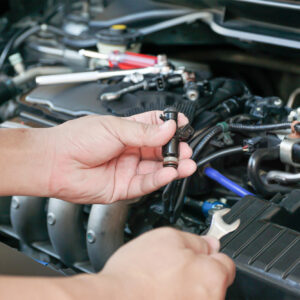The carburetor contains many components that work together to deliver the correct air-fuel mixture that can meet the load placed on the engine. One of those components is the choke. It plays a critical role when starting a cold engine.
What Is the Choke?
Also called the choke valve, the choke is an enrichment device found in naturally aspirated engines. You can find it on the top of the carburetor’s air passage inlet upstream of the venturi tube.
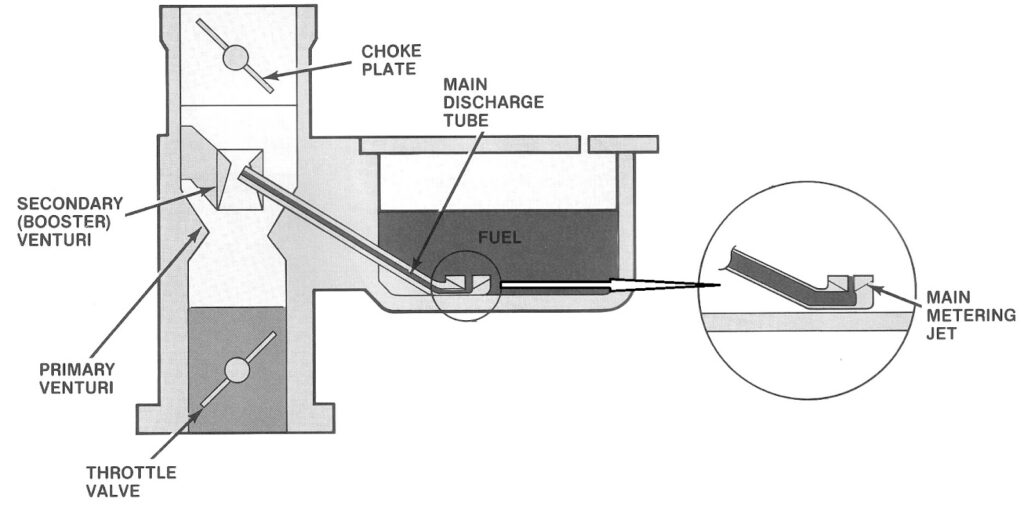
You can group chokes according to their means of operation. A manual choke requires you to operate the butterfly valve. Using the control lever or pulling the handle, you can freely open or close the choke valve.

The other type is the automatic choke. Also called the electric choke, this automated butterfly valve can open or close without input other than the driver’s touching the throttle to “set” the choke on cold start. It measures the engine’s temperature and changes the valve’s position accordingly.
When and Why Does the Choke Work?
A gas-burning engine needs extra fuel to start when it’s cold. On carbureted engines, the accelerator pump squirts a bit of fuel into the intake manifold. The choke is closed either manually or automatically, and when the engine starts, the choke is opened just a bit to allow more airflow.
A gas-burning engine needs extra fuel to start when it’s cold. On carbureted engines, the accelerator pump squirts a bit of fuel into the intake manifold.
– Richard McCuistian, ASE Certified Master Automobile Technician
The choke has done all it needs to do within about a minute and should be fully open within 60-70 seconds, regardless of whether it’s automatic or manually operated.
Before the advent of fuel injection systems in automobiles, chokes appeared in almost any vehicle equipped with a carburetor. Today, you can still find chokes in small engines, such as the ones that power marine engines, motorcycles, and riding lawn mowers.
Fuel-injected engines pulse all their injectors together on cold start, then begin to fire sequentially after the engine is running. Some early fuel-injected engines had a cold start injector that provided the required cold enrichment.
How Does a Choke Work?
When not in use, the choke stays in its open position. The butterfly valve lies parallel to the air flow entering the carburetor and won’t restrict airflow into the cylinder.
If your car features a manual choke (see illustration), you must operate the valve when you start. Pulling the control handle or turning the control level activates a spring connected to the choke. The spring rotates the butterfly valve to the closed position.
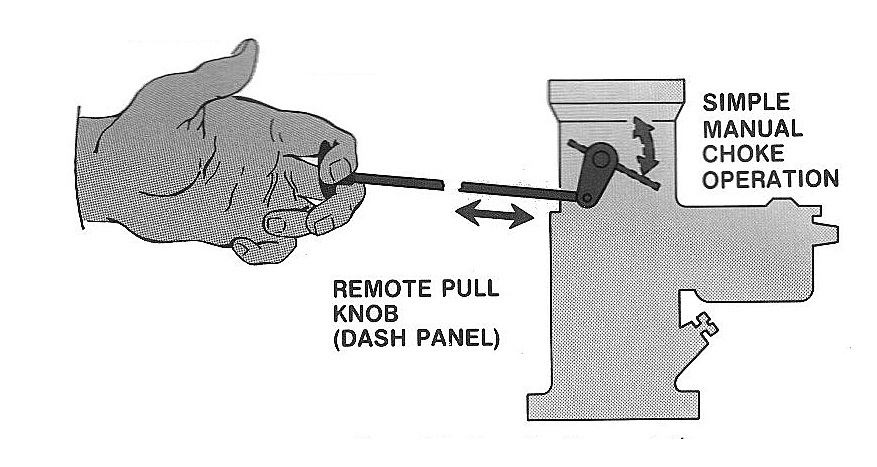
An automatic choke doesn’t require your input. When you fire up the engine, the bimetal spring connected to the choke shaft will close the choke as soon as you tap the accelerator, which releases the external linkage holding it open. If the temperature is colder than usual, the automatic choke will rotate to the closed position.
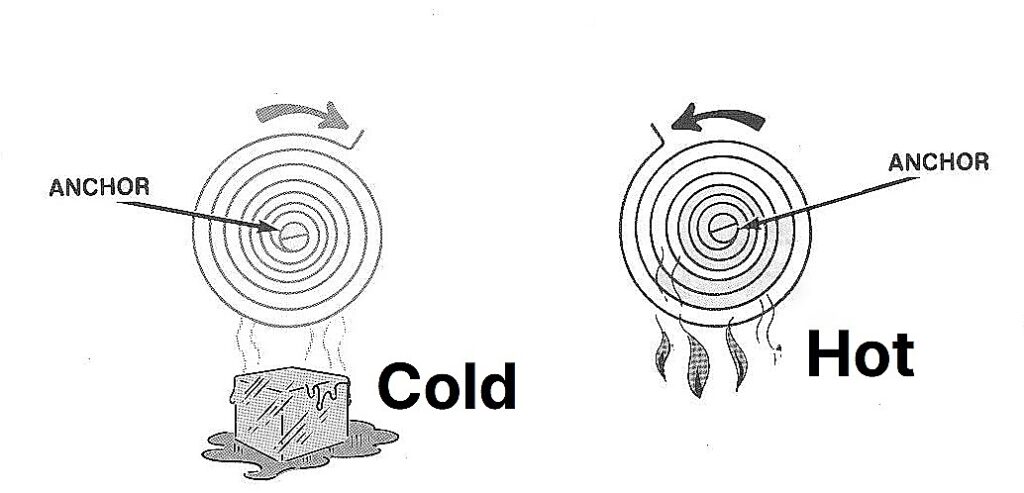

A closed choke valve positions itself at an angle that interrupts airflow. It reduces the volume of air moving into the cylinder.
Once the engine warms up, the choke has done its job. Open the manual choke to let more air into the cylinder. An automatic choke will rotate back to its open position without your input.
After opening the choke, the carburetor can operate normally.
What Does a Choke Do In the Carburetor?
The choke, when closed on cold start, restricts air flow past the venturi in the carburetor. It can enrich the air-fuel mixture by reducing the amount of incoming air without increasing the amount of fuel.
In addition to restricting air flow, the closed choke valve increases the partial vacuum that pulls fuel into the carburetor. The higher vacuum moves more diesel from the float chamber into the venturi throat.
The choke enriches the air-fuel mixture by reducing airflow, enriching the fuel supply. The engine needs a rich mix during a cold start for easier starting and proper acceleration. If the choke doesn’t work or is maladjusted, the engine will be hard to start and will stall after it’s started until it gets warm.
Why Is the Choke Important?
While the choke only operates briefly in specific conditions, it’s indispensable during cold starts.

Gasoline behaves differently depending on the ambient temperature. When it’s hot, the fuel vaporizes. Gasoline vapor combusts more easily.
Conversely, cold temperatures keep gasoline liquid, making it harder for the fuel to vaporize.
If you leave your vehicle untouched for long periods, its engine can get cold enough to interfere with gasoline vaporization. The same thing will happen during cold weather, such as heavy rains or the winter season.
The engine needs a rich air-fuel mixture to start and maintain combustion during a cold start. A rich mix contains a much higher proportion of fuel compared to air.
There are some advantages to running rich in certain situations. A rich air-fuel mixture contains more than enough gasoline to ensure all the oxygen in the cylinder gets burned up.
The choke ensures the engine receives enough fuel during a cold start to idle.
More About the Choke In the Carburetor
Most carburetors feature a spring-loaded choke. The spring applies mechanical force to the butterfly valve, rotating the latter to the correct position. It’s a simple yet efficient setup.
Once the engine starts, almost all carburetors have a vacuum break (choke pull-off) that opens the choke plate about ⅛ inch the moment the engine starts. When the choke is closed, there is a stepped cam that also provides a slightly higher idle speed.
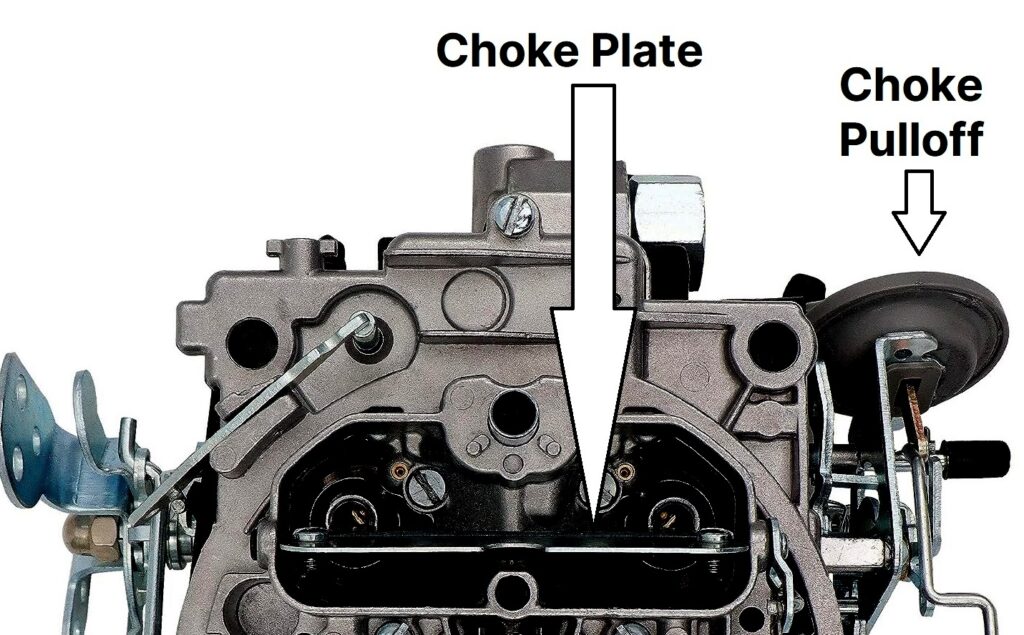
If the choke valve stays in the closed position longer than necessary, the engine will continue running rich. More gasoline goes unburned, wasting fuel and increasing emissions. Running rich can also reduce performance and wear out parts faster, increasing the risk of a more severe issue.
Other enrichment devices found in earlier carburetors might use different methods of enriching the air-fuel mixture. While they also go by the term choke and make the air-fuel mix richer, they are separate devices that operate differently.
If a cold start doesn’t successfully start your car, look at the choke. on the engine. The choke valve might have gotten stuck in a partially open position that prevents it from restricting the cylinder’s airflow. Until you can get the choke to close, the engine might not get enough fuel to idle.
Conversely, a choke stuck in its closed position will cause problems once the engine warms up. It will prevent the influx of airflow required by the engine to produce power.
How Much Does a Replacement Carburetor Choke Cost?
If you need a new carburetor choke, prepare to spend anywhere between $20 and $100. Make sure to pick a compatible replacement part for your car.
Any information provided on this Website is for informational purposes only and is not intended to replace consultation with a professional mechanic. The accuracy and timeliness of the information may change from the time of publication.








